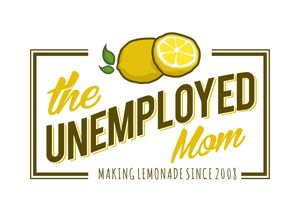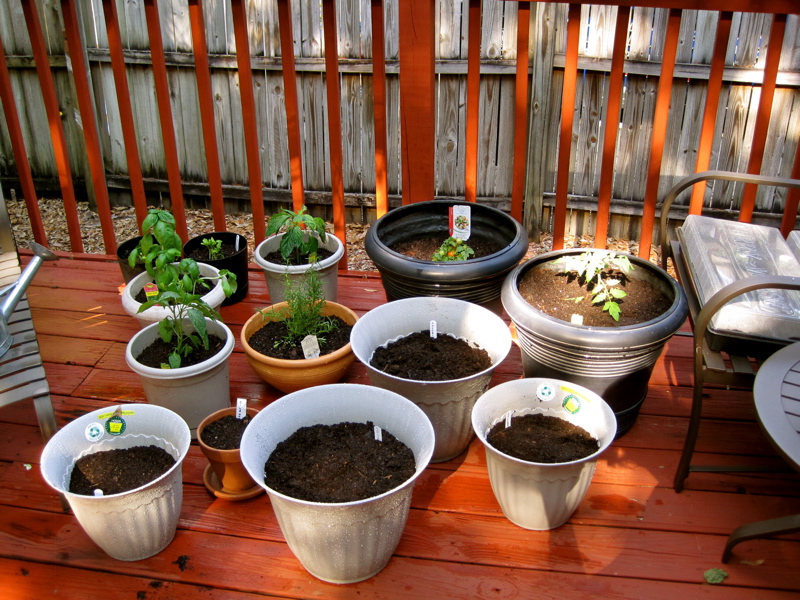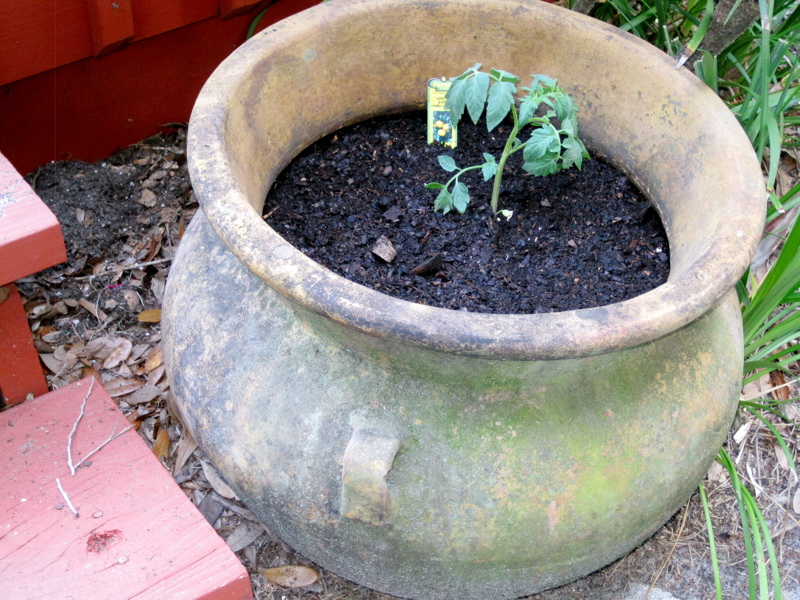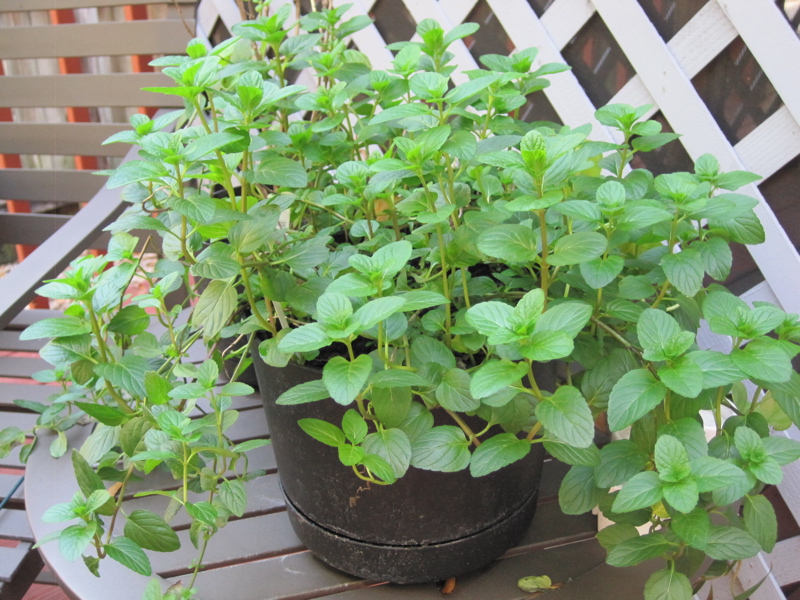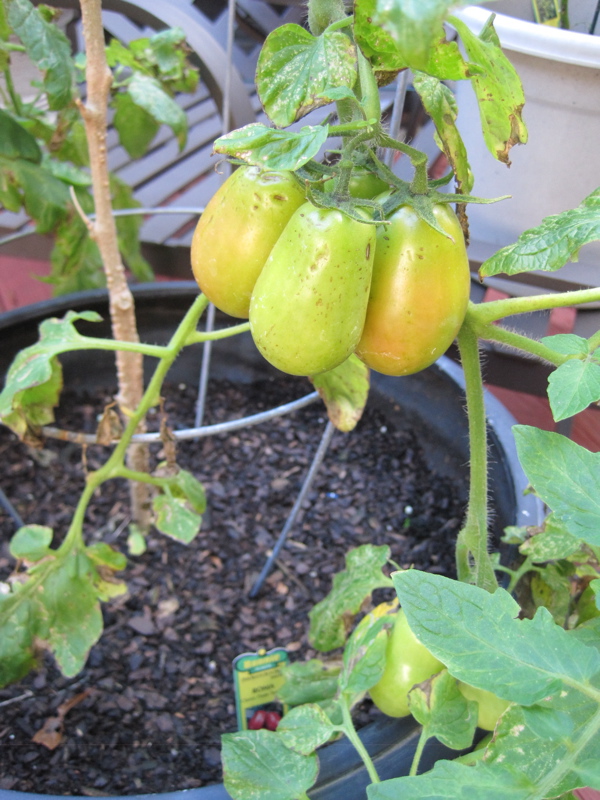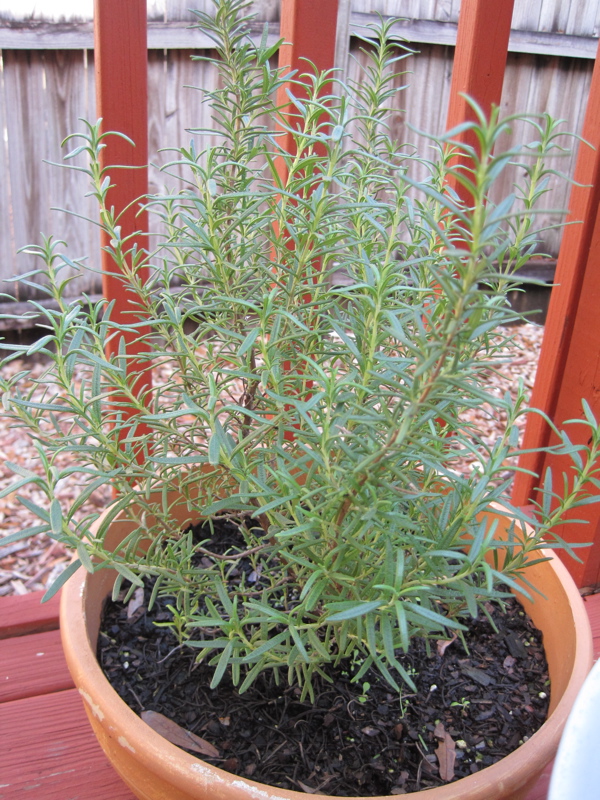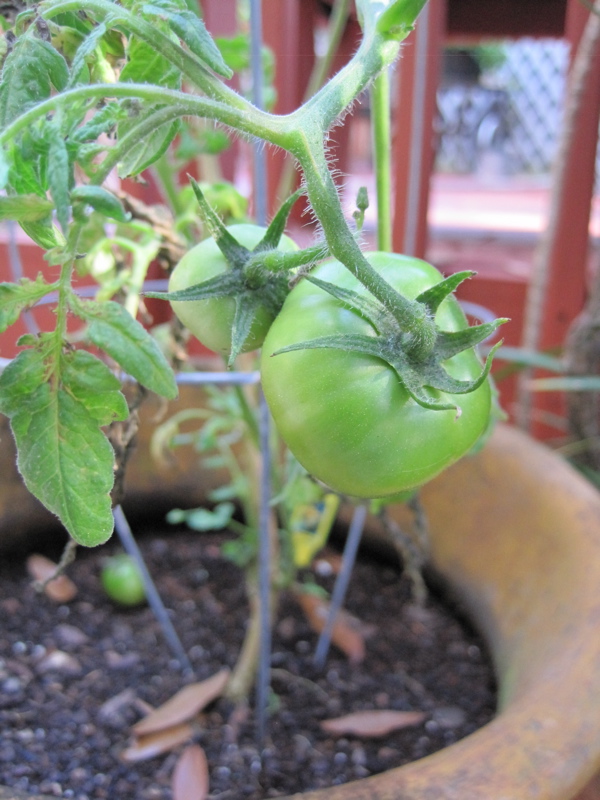Last Spring, I blogged about creating an organic container garden. Since then, I have learned valuable lessons along the way and feel confident with our container garden. We have successfully grown a variety of peppers (banana and bell), lettuce, tomatoes (Roma, cherry and yellow boy) as well as herbs (basil, rosemary, mint, and cilantro). We tried growing vegetables and herbs from seeds; however, had a much higher success rate with the organic seedlings that we planted.
For those eager to start a container garden but not sure where to begin, this blog is for you!
How do you get started with planting a container garden? What is necessary?
- Seedlings and/or Seeds
- Containers & Planting Supplies
- Soil
- Plant Food
- Water
Seedlings and/or Seeds: Determine what you would like to grow in your garden. I spent a small fortune on organic seeds and seedlings because the thought of growing all my produce was exciting. Realistically, I should have tried planting a few items to see what grows best in my environment. Also, if using seeds pay attention to the planting instructions (time of year to plant, how deep in the soil, how many seeds to sow, climate, amount of direct sunlight, watering, etc.).
Containers: Have a variety of containers to plant in. If you are handy, you can make planters. The main thing to keep in mind is drainage. Make sure your containers have holes so water can drain properly. If they do not, simply use a drill and put a few drain holes in the bottom. Be creative when it comes to containers, you do not have to spend a fortune on pots.
Planting Supplies: If planting seeds, use small stakes to identify what you have planted. Popsicle sticks work well, use a permanent marker to indicate what you have planted and place them inside your container. You will also need a small spade for the soil and gardening gloves.
Soil: You will need an abundance of potting soil/mix, especially if using large containers. If you do not make you own soil or compost, there are a variety of products that can be purchased. We selected Scotts Miracle-Gro Organic Choice Potting Mix because it was one of the few organic mixes available and it has worked well for us.
Plant Food: This was something we did not use initially, but my parents visited about 3 months after we started our gardening adventure and said “your plants are hungry”. They have a lot of experience with gardening, so we quickly took their advice! Sure enough, we purchased some Miracle-Gro Organic Choice All Purpose Plant Food and started feeding our plants regularly (every 2 weeks) and the results are amazing!
Water: Make sure to water your garden regularly. We are currently watering once per day; however, during the hot Florida summer months we do water more frequently.
How Long Until I Have Vegetables & Herbs? This answer is not simple, it all depends on whether you planted seeds or used starter plants. Cilantro is the only herb I had success with from seeds and it did not take long to grow (a few weeks actually). I used organic starter plants for my basil, rosemary and mint because I didn’t want to wait. All three have continued to grow like crazy.
As for vegetables, it seems like our various peppers and tomatoes have new growth every day! It has taken a long time to get to this point (8 months to be exact) but it is very exciting to see the vegetables getting bigger and riper every single day. The plants did produce a few vegetables last year, but the plant food has really made a difference in quantity and size!
Basil Tip: I have learned to pinch the flowers off of my basil so it becomes more bush like in appearance. Also, the more basil I use…the better it grows. Seems crazy, but it’s true. Also, we accidentally broke some off while covering our plants during freezing temperatures. We placed those sprigs into a cup of water, let it grow roots and then replanted.
Other: Keep in mind, the initial investment (seeds, plants, containers, soil, plant food, etc.) can be expensive; however, there is nothing more rewarding than producing your own vegetables and herbs. If something doesn’t survive, do NOT throw out the soil, instead reuse it and attempt to grow something else.
Also, you will probably have insects, snails and/or worms that attack your plants. Check on them often, we had a tomato worm that literally ate 75% of a tomato plant in a matter of hours!
These photos were taken on the first day we planted our container garden (May 2010).
And here is our garden now, 8 months later…
